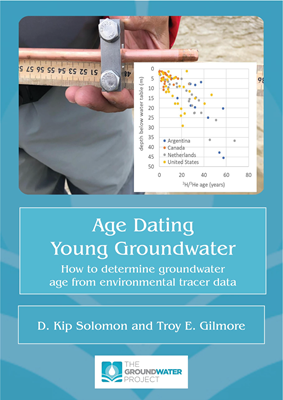This book provides an overview of common tracer methods that can be used for age dating young groundwater that recharged less than about 60 years ago. In this book, applications of tracers to address hydrogeologic problems are only mentioned briefly because such problems are the topic of the Groundwater Project Book titled Introduction to Isotopes and Environmental Tracers as Indicators of Groundwater Flow (Cook, 2020) which readers are encouraged to review.
The dating tracer methods include tritium (3H), tritium/helium-3 (3H/3He), sulfur hexafluoride (SF6) and chlorofluorocarbons (CFCs). All these methods except 3H involve the occurrence and transport of dissolved gases and thus the basic concepts of dissolved gases are discussed in this book.
The authors are hydrogeologists interested in solving both groundwater quality and quantity issues in a world in which the availability of high-quality groundwater is diminishing. The goal of this book is to inform researchers and policy makers about the concepts and underlying assumptions involved in groundwater dating methods with the aim of increasing the application of these powerful methods while informing readers of their inherent limitations.

